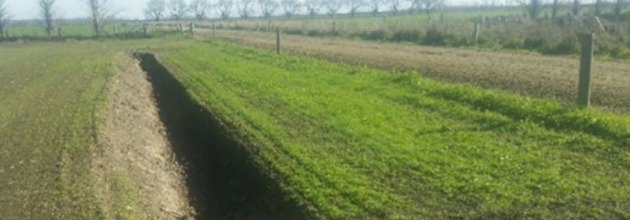
Dairy farm laneways adjacent to drains pose a risk as a potential source of contaminants to water. Laneways represent locations with large amounts of effluent loading. Furthermore, cow movement across a laneway of compacted gravels is likely to mobilise fine sediment, increasing the possibility of transport into waterways via runoff during rainfall events. Despite the risk of contaminant losses from laneways to nearby waterways, few studies have quantified the effects of good riparian practices to reduce loading of nutrients, sediment and faecal material from surface runoff.
A trial has been installed on a Pāmu (Landcorp) farm in the Manawatu, Moutua complex where a cow laneway runs adjacent to an open (pumped) drain for 700m+. Six rank grass riparian buffers plots have been installed at increasing distances from the cowshed (up to 500m) to determine the effects of differing riparian widths (0.5 to 3.5m) and different loading rates. A novel sampling technique to capture surface runoff- and estimate attenuation of contaminants has been installed. Care has been taken to ensure constant slope away from the laneway centre at each of the six plots.
You can see the results by reading the poster here.